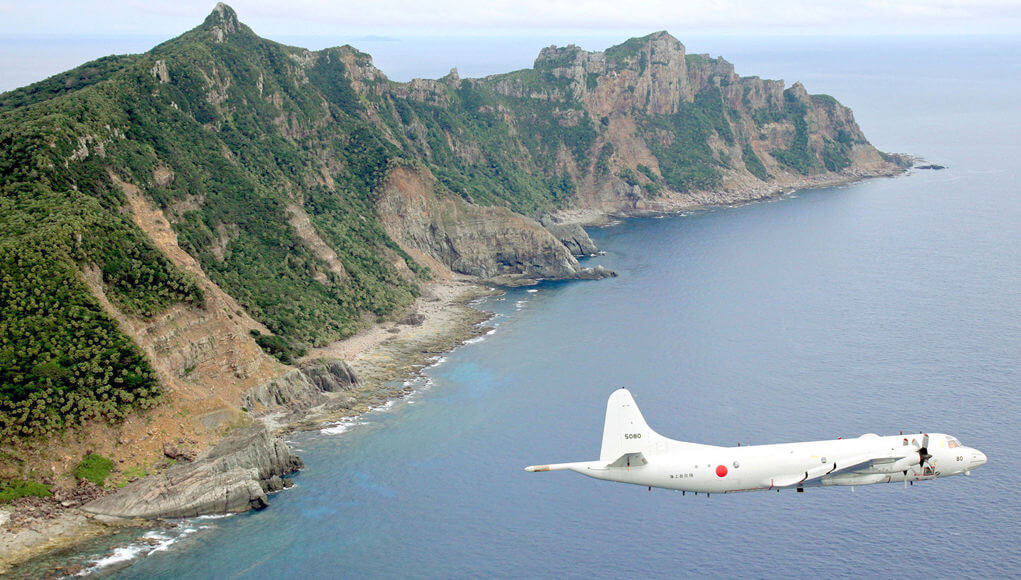While the crisis between China and India has been exacerbated in the Himalayas and has reached the point of actual clashes between the two armies, killing more than 20 Indian soldiers, a small group of islands thousands of miles away could be the start of a military row awaiting ashes before the explosion, according to CNN .
Both Tokyo and Beijing claim that uninhabited islands, known as “Senkaku” in Japan and “Diaoyu” in China, are entitled to them, and these islands have been run by Japan since 1972, and have caused conflict between the two countries for hundreds of years.
CNN says that any unexpected development in Senkaku / Diaoyu could lead to a military confrontation between China and the United States because the United States has a defense treaty with Japan if its territory is attacked by a foreign power, as the United States is obligated to defend it, by virtue of the agreement.
Fears of a possible confrontation increased last week with the Japanese Coast Guard announcing the monitoring of Chinese government ships in the waters near the Senakaku / Diaoyu Islands every day since mid-April, setting a new record for the number of consecutive days, and by Friday, those scenes had reached 67 Days in a row.
The escalation of the dispute
In response to the increasing Chinese presence, Yoshidehide Soga, Chief Secretary of the Japanese Cabinet, said: “The Senkaku Islands are under our control and are undoubtedly our lands historically and under international law, it is extremely dangerous that these activities will continue. We will respond to the Chinese side firmly and calmly.”
In a statement issued on Friday, the Chinese Foreign Ministry responded to the remarks of its Japanese counterpart:
“”The Diaoyu Island and its affiliated islands are an integral part of China, and it is our inherent right to patrol and law enforcement activities in these waters.”
The Chinese government’s Global Times also published reports with the headlines, “Japanese Conservatives are delaying the return of Sino-Japanese relations by tightening the rift over the Diaoyu Islands,” indicating that this could seriously harm Japan-China relations.
According to the Japanese newspaper Asahi Shimbun, Ishigaki City Council wants to separate the islands from the inhabited parts of Ishigaki Island to simplify administrative practices, but in the decision before the Ishigaki City Council, “the city affirms that the islands are part of Japanese territory.”
“Changing the administrative classification at this time can make the conflict more complicated and bring more risk of a crisis,” Li Haidong, a professor with the Institute of International Relations of the University of Chinese Foreign Affairs, told the Global Times. A vote is expected in Ishigaki at a council meeting on Monday.
Tokyo nationalized the privately owned islands in 2012, to stave off the sale of the islands, sparking massive and unusual street protests across China, amid a wave of nationalist sentiments.
The demonstrations turned violent, as the demonstrators pelted the Japanese embassy in Beijing, looted shops and restaurants, and smashed Japanese cars as well.
History of the dispute
China says its ownership of the islands dates back to 1400 when it was used as a starting point for Chinese fishermen, while Japan says it saw no trace of Chinese control of the islands in the 1885 survey, so it officially recognized them as sovereign Japanese lands in 1895.
https://easternherald.com/op-ed/bangladesh-indias-biggest-ally-or-chinas-dragon-nest-45624/
In 1932, Japan sold the islands to the descendants of the original settlers, but after World War II the islands came under American control until 1972, as the self-ruled Taiwan, which Beijing regards as a Chinese province, claims ownership of the islands.
It is noteworthy that China has angered its neighbors during the past weeks, after it transferred its missiles to the artificial islands it built near Taiwan, and also flooded a Vietnamese fishing boat, as well as harassed a Malaysian survey ship, in addition to the incident in the Himalayas with India.












